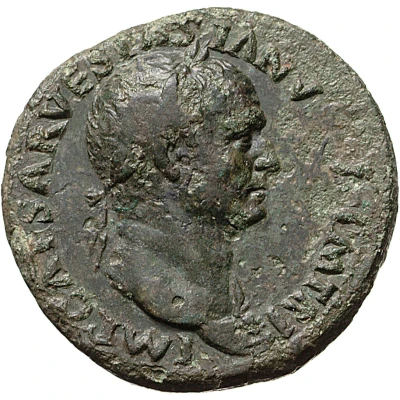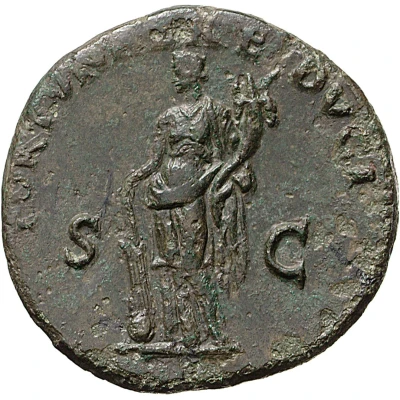Sestertius - Vespasian IVDAEA CAPTA S C; Judaea
71 year| Bronze | - | - |
| Issuer | Rome › Roman Empire (27 BC - 395 AD) |
|---|---|
| Emperor | Vespasian (Titus Flavius Vespasianus) (69-79) |
| Type | Standard circulation coin |
| Year | 71 |
| Value | 1 Sestertius = ¼ Denarius |
| Currency | Denarius, Reform of Augustus (27 BC – AD 215) |
| Composition | Bronze |
| Shape | Round (irregular) |
| Technique | Hammered |
| Demonetized | Yes |
| Updated | 2024-10-06 |
| Numista | N#248933 |
|---|---|
| Rarity index | 100% |
Reverse
Captive, looking back, standing left of palm-tree; Judaea seated right on cuirass; various arms around.
Script: Latin
Lettering: IVDAEA CAPTA S C
Translation:
Iudaea Capta. Senatus Consultum.
Conquest of Judea. Decree of the senate.
Comment
Source: Online Coins of the Roman Empire (OCRE)Interesting fact
The Sestertius coin was used to pay Roman soldiers during the reign of Emperor Vespasian, who ruled from 69 to 79 AD. The coin's design features a portrait of Vespasian on one side and a depiction of Judaea (present-day Israel) on the other, signifying the Roman Empire's conquest of the region. The coin's bronze composition was also a significant departure from the previous silver denarii coins, which had been the standard for centuries. This change in material reflects the economic challenges faced by the Roman Empire during Vespasian's reign, including inflation and debasement of the currency. Despite these challenges, the Sestertius coin remained a widely used and highly valued form of currency throughout the Roman Empire.

